Mexicans and foreigners alike love Oaxaca City for its indigenous history and culture, colorful colonial architecture, traditional arts and crafts, unique regional cuisine, and artisanal mezcal. On top of that, the people of Oaxaca, over half of whom identify as indigenous, are incredibly warm, friendly, and welcoming. Soak it all up with this guide on top sights in Oaxaca City, including can’t-miss museums, galleries, and markets.
Check out more Oaxaca travel guides, tips, and recommendations here.
Sightseeing
Historic Center
Oaxaca City’s historic center is a colorful and vibrant 16th-century colonial town and UNESCO World Heritage site. It spans 247 blocks with 1,200 UNESCO-listed monuments, so after hitting the main sights below, the next best thing to do is get lost! To experience Oaxaca’s charm, wander aimlessly into the city’s many artisan shops and galleries and grab a bite anywhere you see the locals queueing.
Calle Macedonio Alcalá is Oaxaca’s picturesque and cobblestoned pedestrian corridor. Beautiful shops, museums, galleries, cafes, restaurants, and street markets fill Calle Alcalá. It’s also where you’ll see local celebrations – for weddings, quinceañeras, you name it – passing through!
Walking south from Calle Alcalá’s starting point leads you to the Templo de Santo Domingo de Guzmán. This baroque church, with its ornate and gilded interior, is Oaxaca’s finest. It was built under the Dominican order starting around 1575 and named after the order’s founder, Spanish monk Santo Domingo de Guzmán. You’ll see Saint Dominic’s family tree depicted on the ceiling above the church’s entryway.
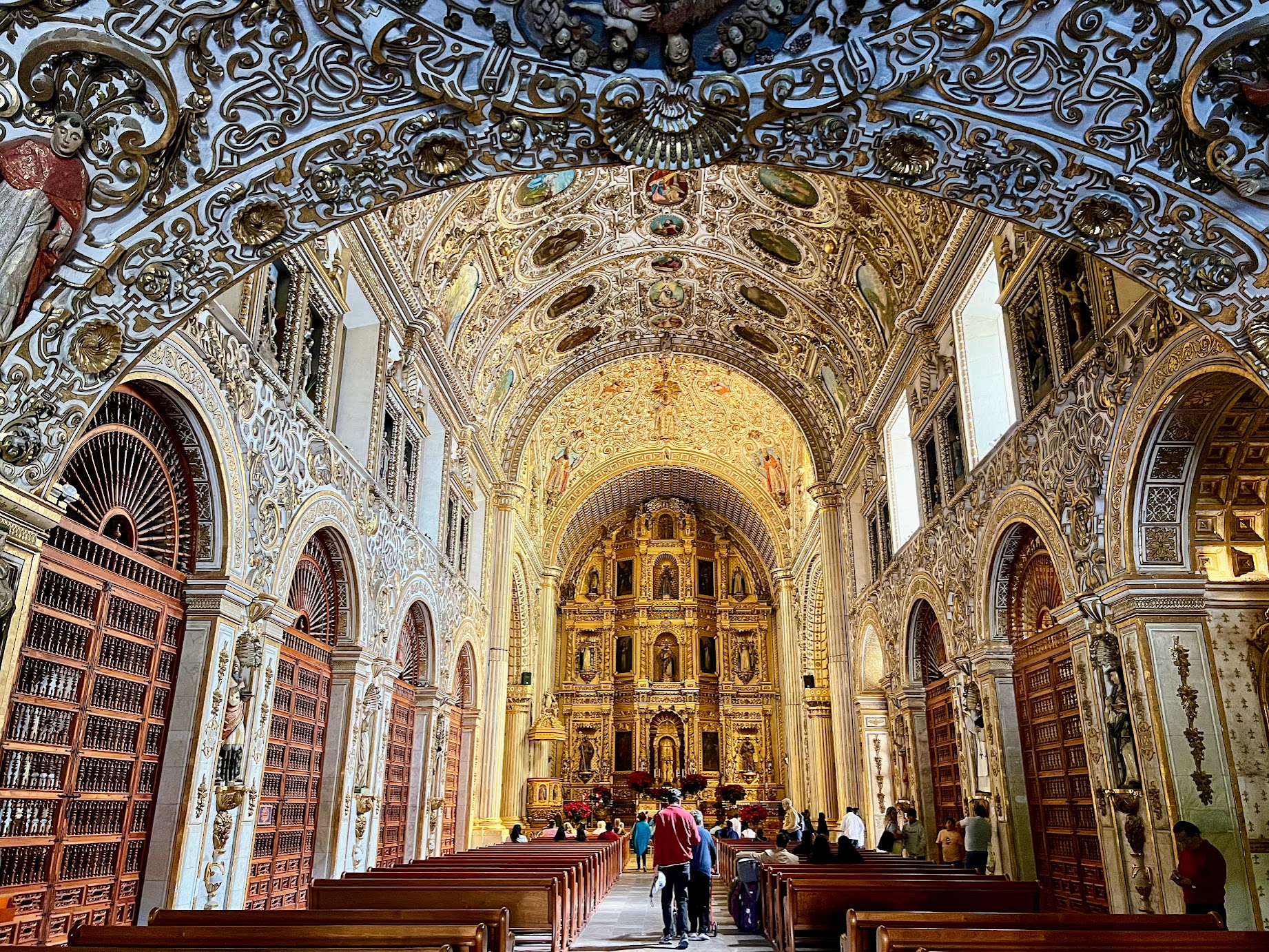
Behind the church is the Jardín Etnobotánico de Oaxaca. Opened in 1998 and designed by Oaxacan artist Francisco Toledo, the botanical garden showcases the wide array of plants native to Oaxaca, Mexico’s most biodiverse state. I recommend visiting the gardens if you enjoy plants and natural history but note that you can only visit through a guided tour, currently offered in Spanish (1 hour) and English (2 hours).
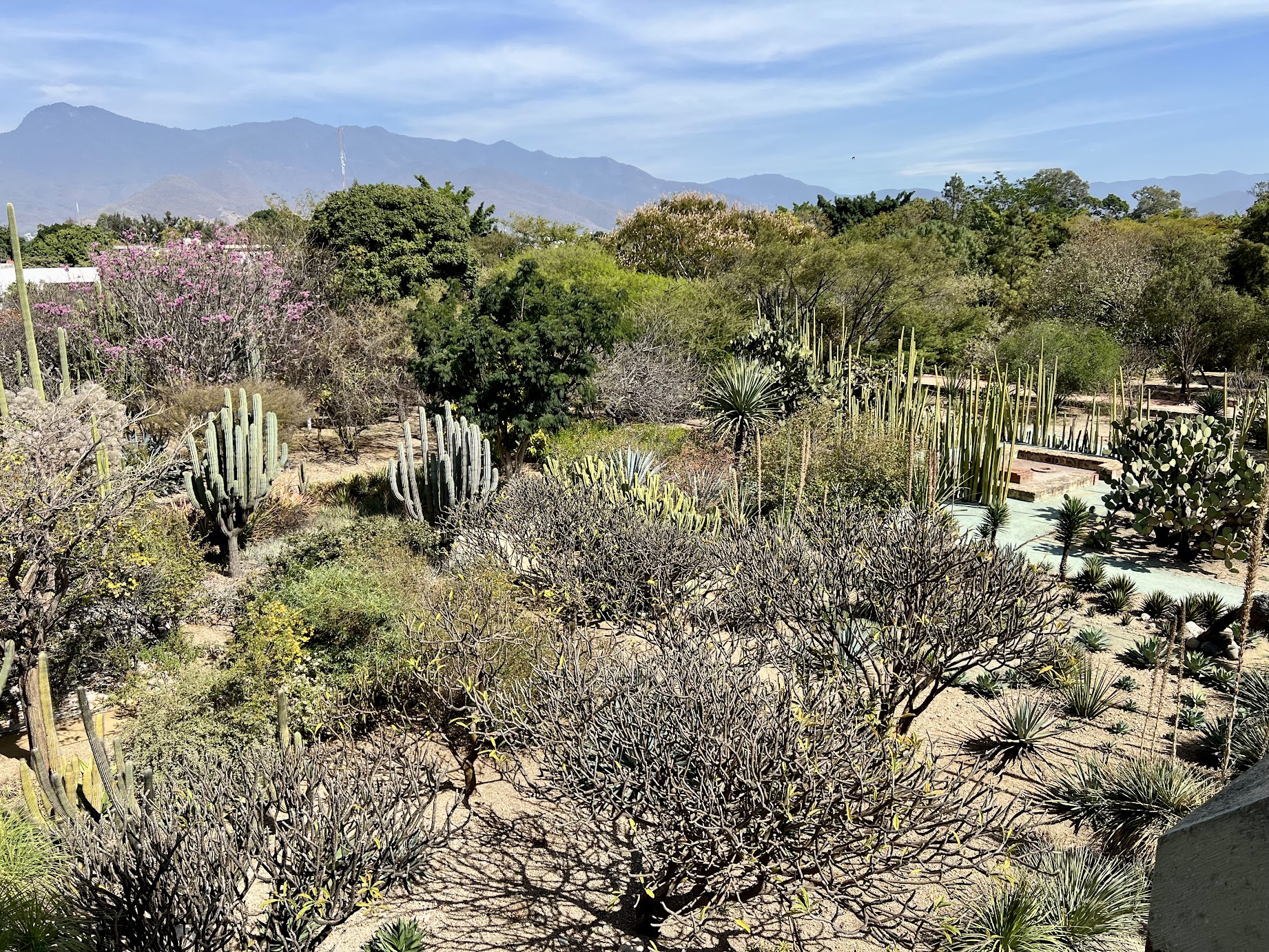
Just off Calle Alcalá on Avenida de la Independencia is the stunning Teatro Macedonio Alcalá. Built in 1909, the theater has an incredible French-style interior and hosts a variety of performances and events.
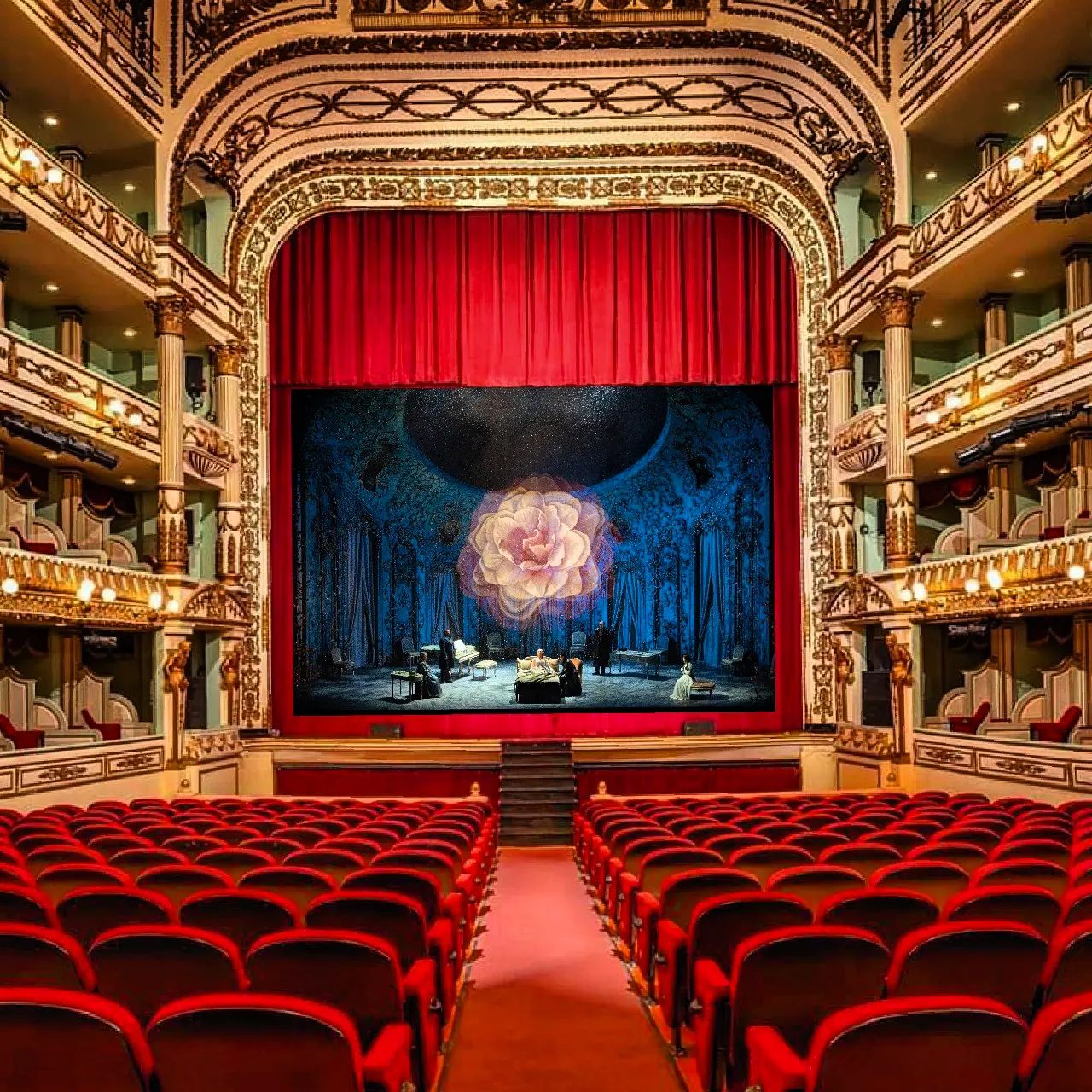
Photo Credit: Teatro Macedonio Alcalá
At Calle Alcalá’s southern end is the Catedral de Nuestra Señora de La Asunción (Cathedral of Our Lady of the Assumption). This Roman Catholic baroque cathedral was built in 1553 and, following several earthquakes, reconstructed in the 18th century. My favorite part of the cathedral is its exterior, with beautiful carvings that contrast against the building’s green Cantera stone.
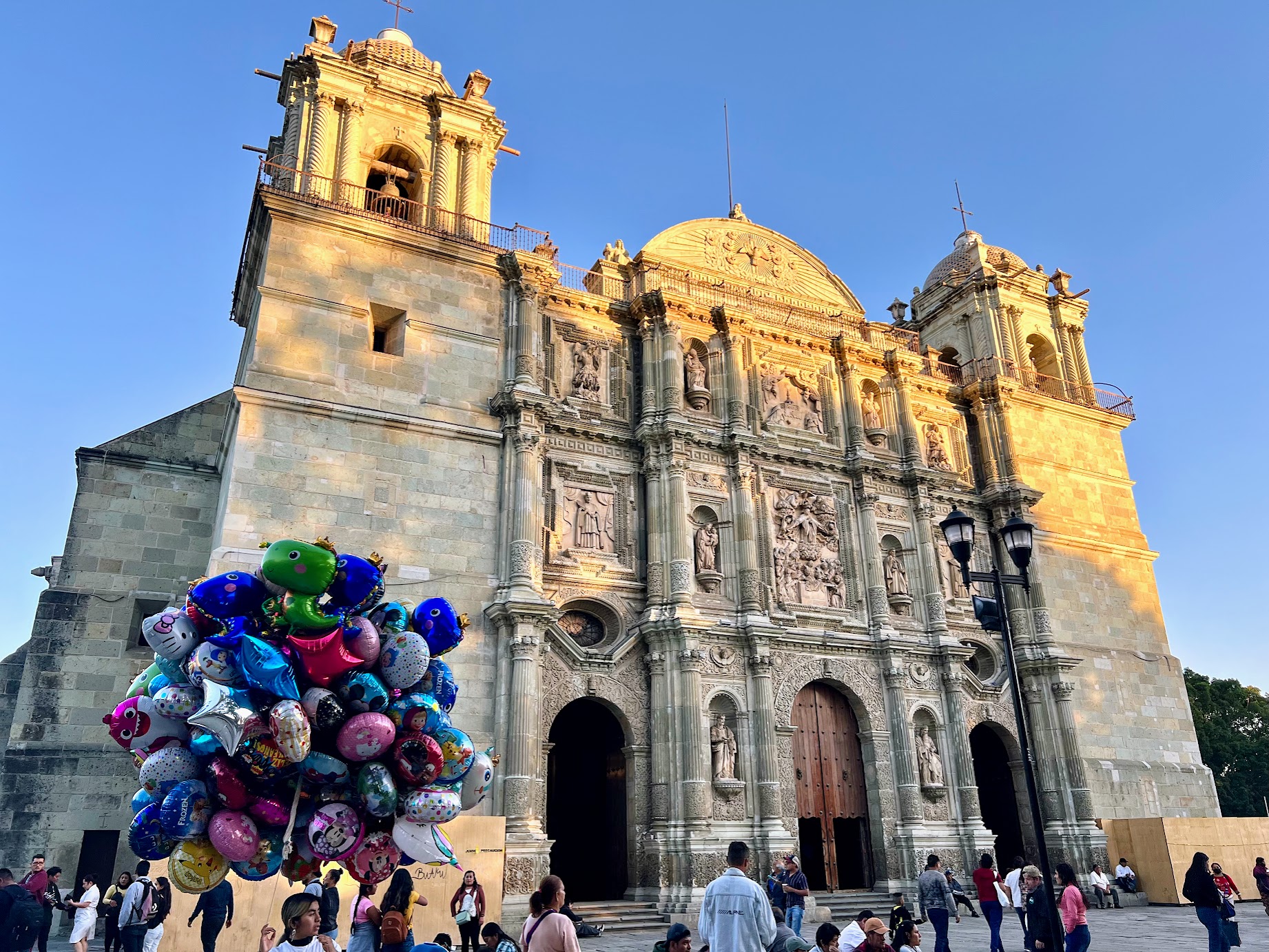
Beside the cathedral is the bustling Zócalo, Oaxaca’s main public square. It’s shaded from the sun by laurel trees planted in the 1870s and lined by cafes that spill out from the archways of historic buildings. On Sundays, around noon, the State Band of Oaxaca plays a free concert in the plaza.
The Palacio de Gobierno (Government Palace) is on the Zócalo’s south side. The beautiful building has a mural of former President Benito Juarez, a native Oaxacan, and Mexico’s first indigenous president.
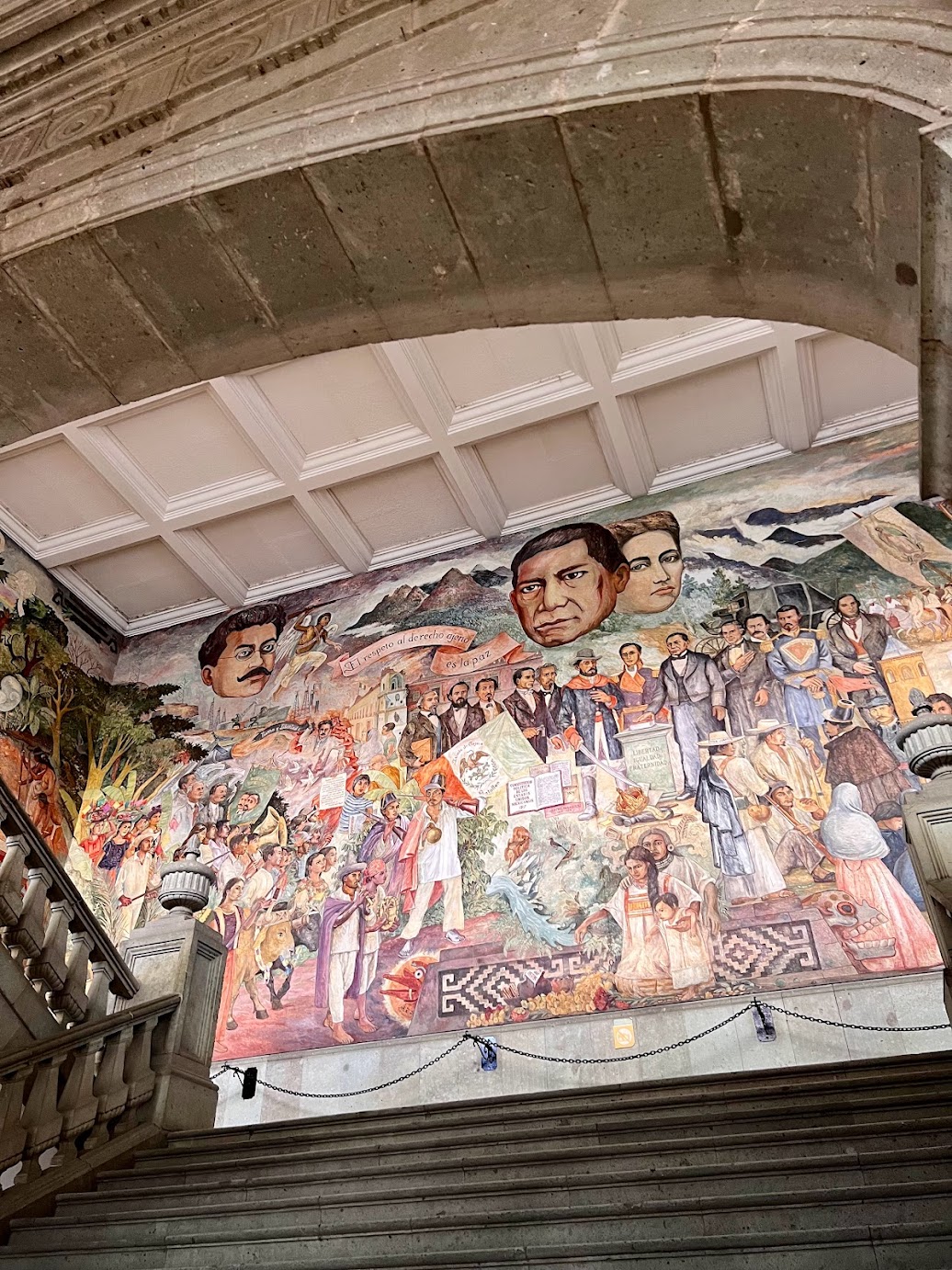
The Basílica de Nuestra Señora de la Soledad is a ten-minute walk northwest of the Zócalo. This late 17th-century baroque church is dedicated to Oaxaca’s patron saint. It’s a local favorite with a workaday vibe. Check out the church’s chandeliers held by sculpted angels and the small museum next door.
El Barrio de Jalatlaco
El Barrio de Jalatlaco is one of Oaxaca’s oldest and most colorful neighborhoods. It’s characterized by airy streets decorated with papel picado, colorful houses, and tons of folkloric street art. It’s the perfect place to wander aimlessly for a few hours and feels worlds away from downtown Oaxaca City.
There aren’t must-see sights in this neighborhood, so stroll by the Templo de San Matias Jalatlaco, Once in Oaxaca art cafe (recommended for unique souvenirs!), or Mercado de la Merced for a bite to eat.
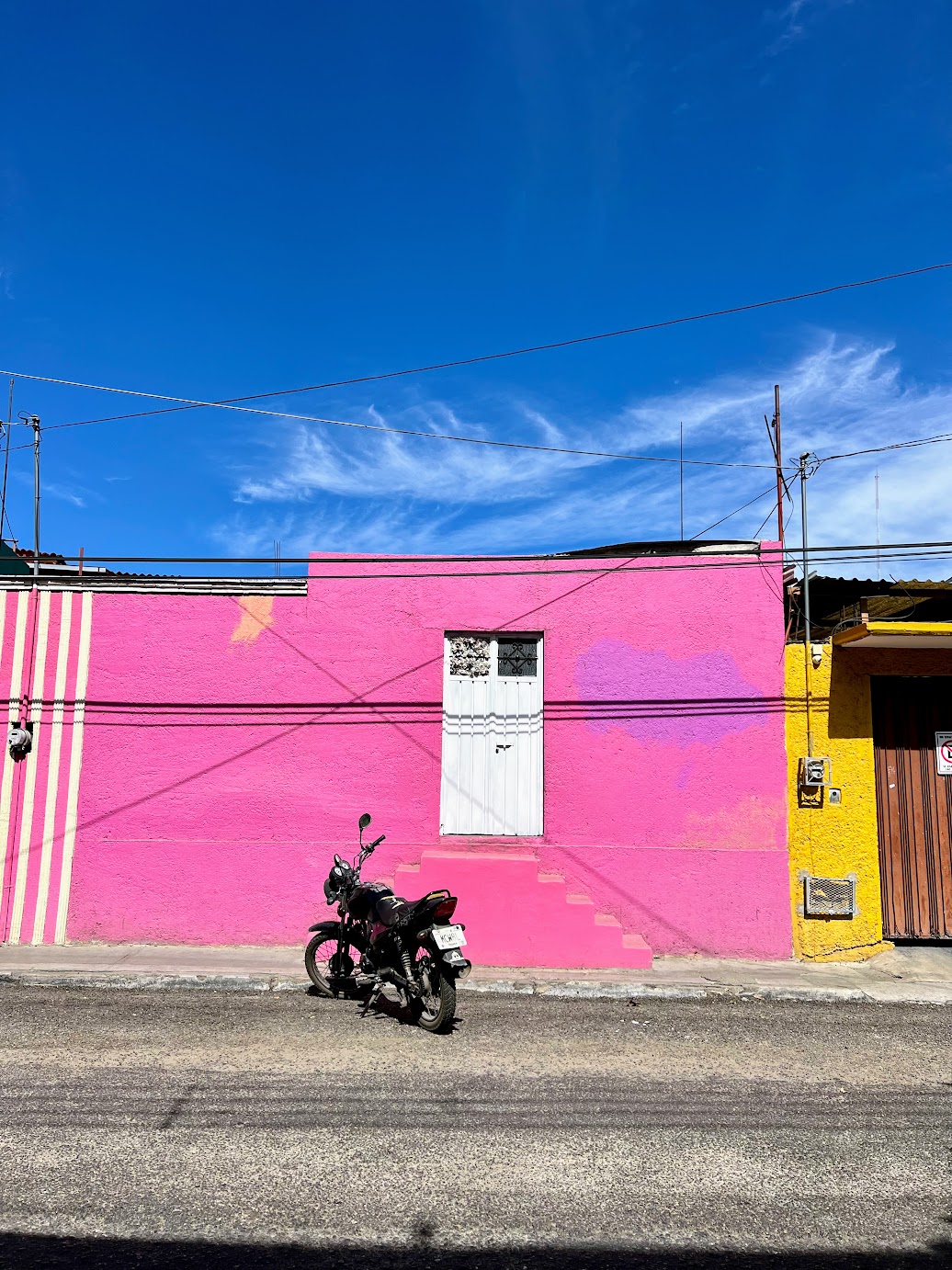
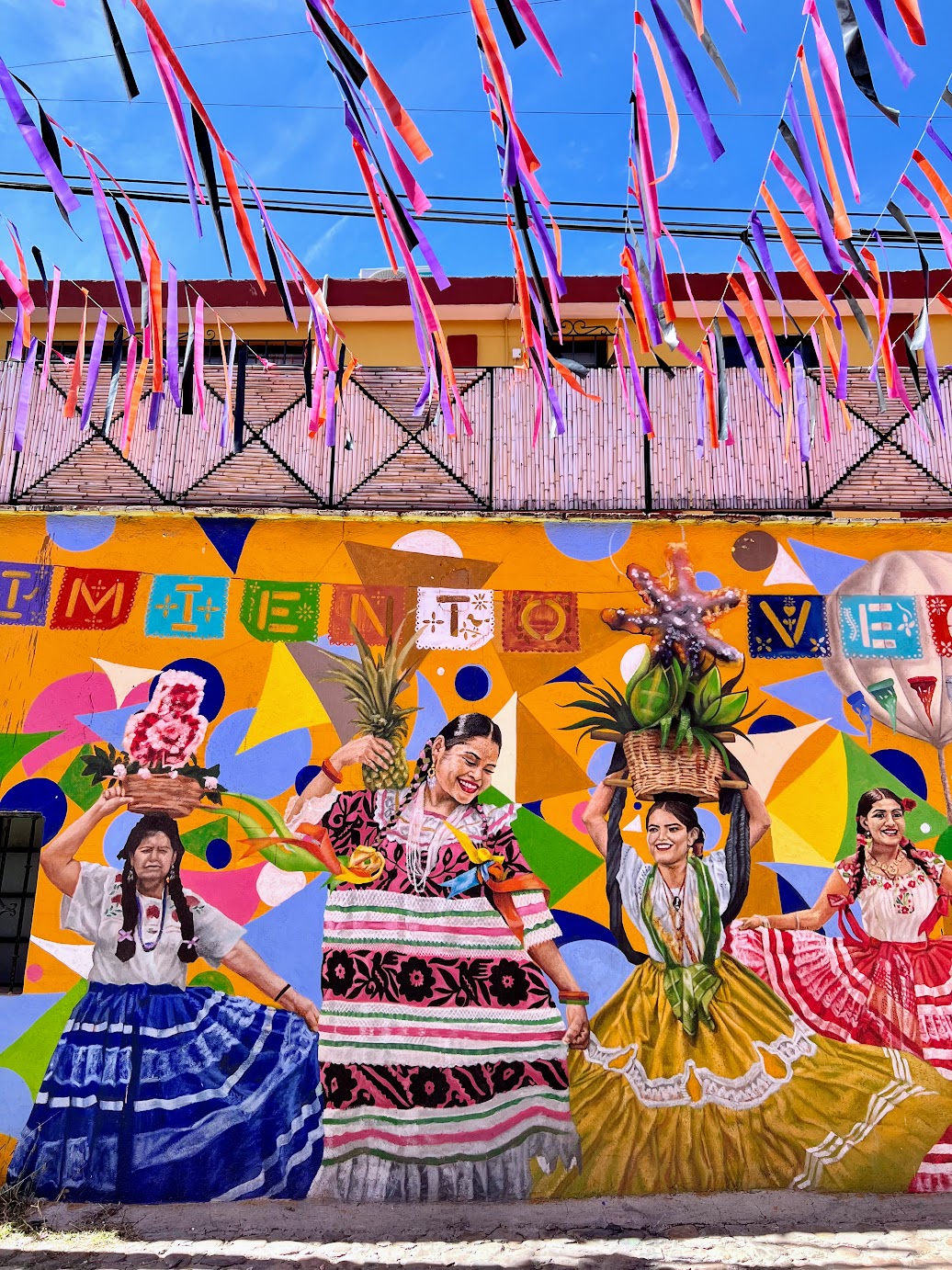
Museums & Galleries
Museums
Museo de las Culturas de Oaxaca is the city’s top museum and one of the best regional museums in Mexico. It’s adjacent to the Templo de Santo Domingo inside a former 16th-century convent. The architecture inside and views of the church and botanical gardens are as worthwhile as the museum’s collection. The artifacts and treasures discovered in nearby Monte Albán are a highlight.
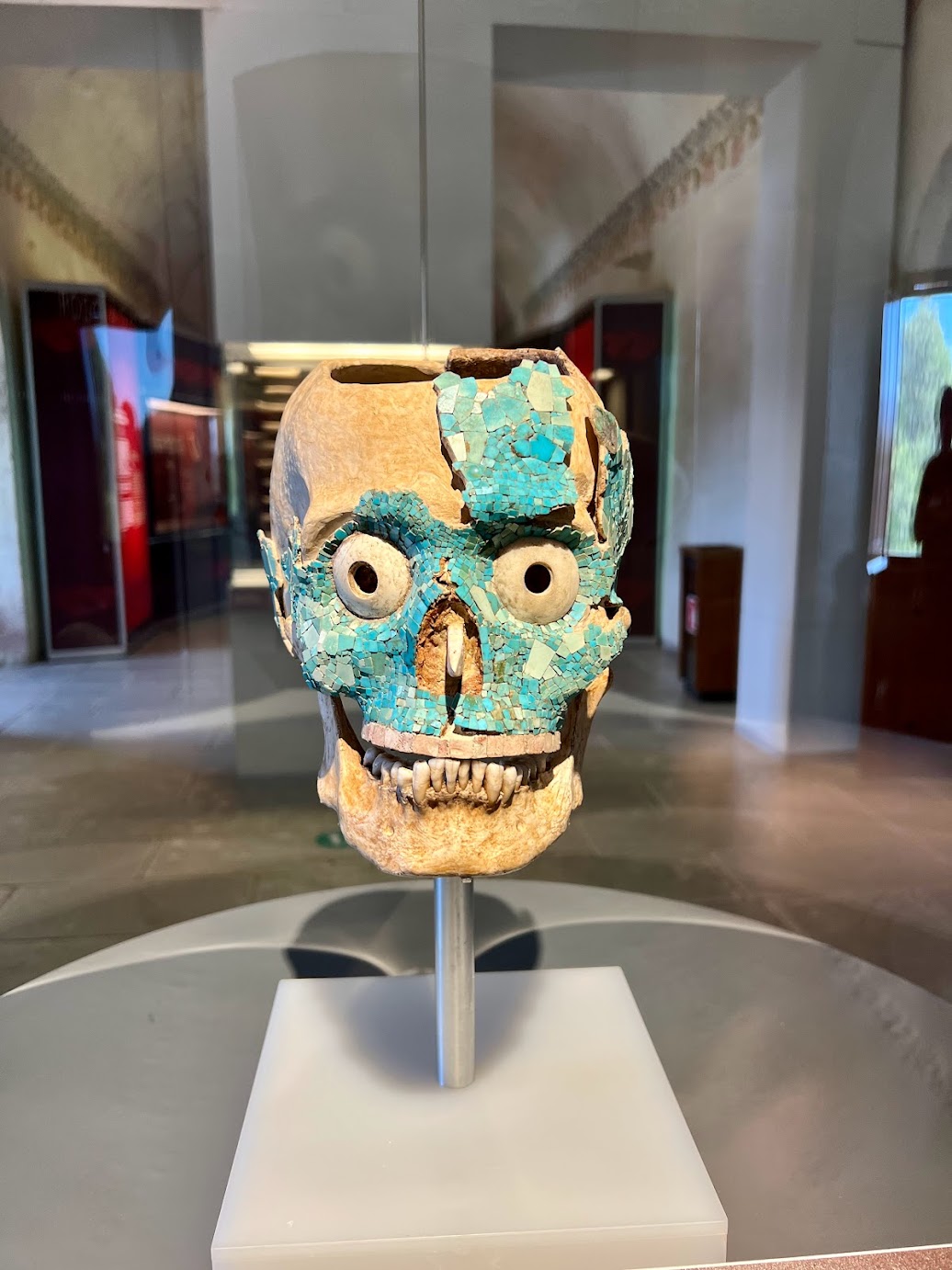
Museo de Arte Prehispánico de México Rufino Tamayo houses the great Oaxacan artist Rufino Tamayo’s incredible collection of pre-Hispanic artifacts in an 18th-century building. The museum is unique and exceptional in that it presents archeology as art. Artifacts from as far back as 1250 BCE are displayed in front of boldly colored walls, mirroring the colors in Tamayo’s paintings. The contrast makes each piece pop and come to life.
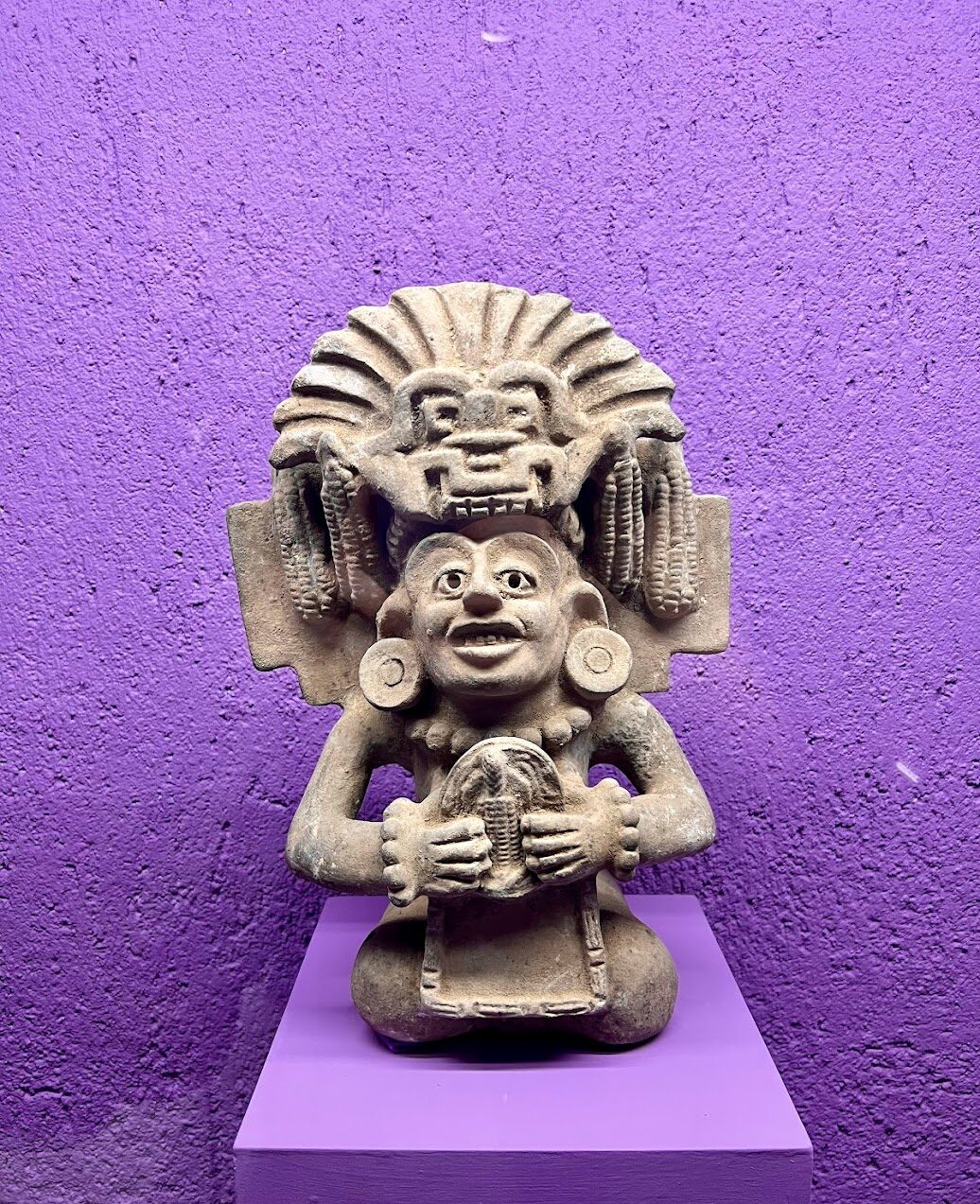
You can also check out Oaxaca’s Textile Museum if you have time. When I visited, there was only one room dedicated to Mexican textiles. There’s also the Oaxacan Painters Museum in a 17th-century building (photo below) and the Museum of Contemporary Art, which is temporarily closed.
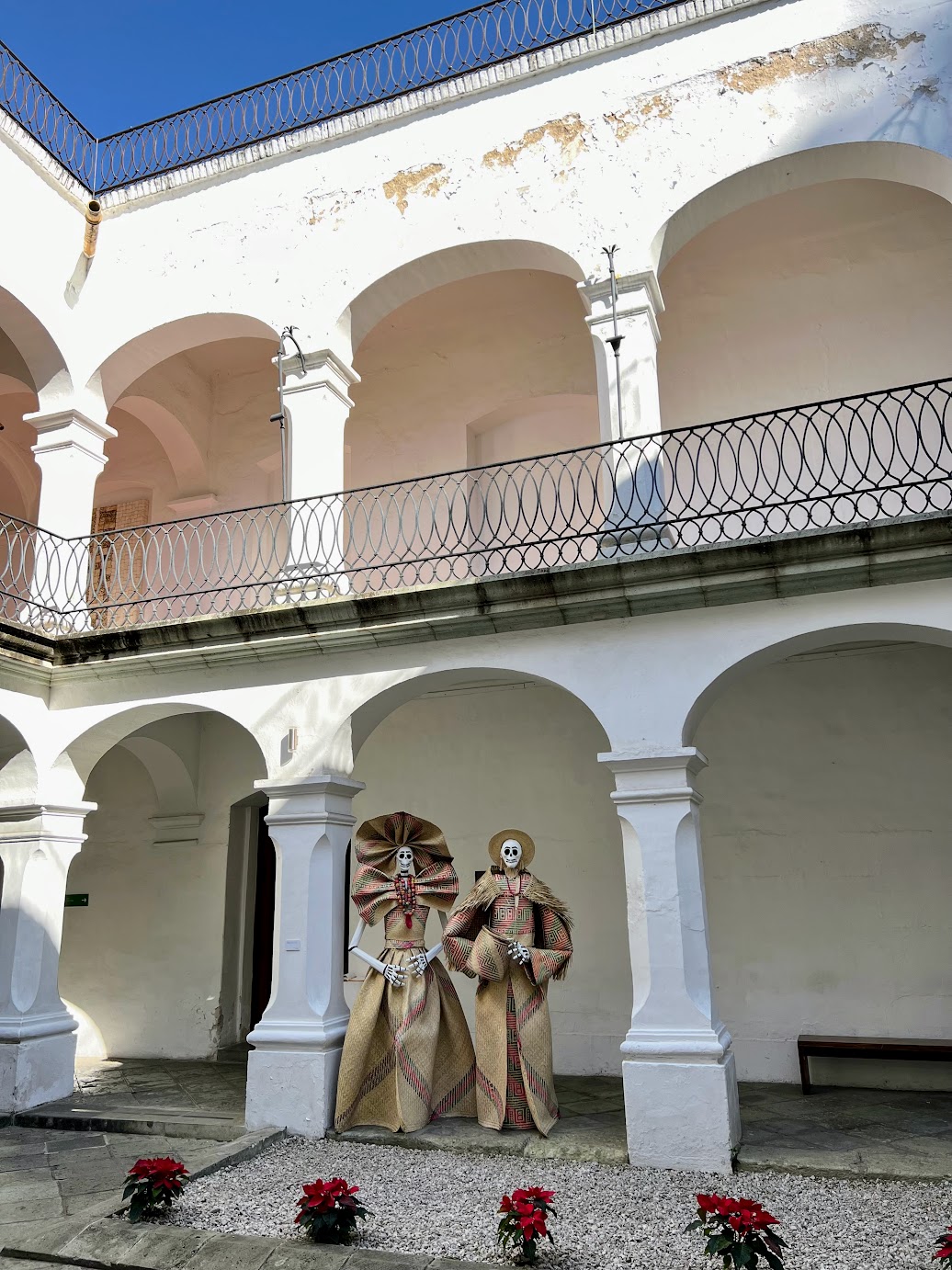
Galleries
Oaxaca is Mexico’s capital of graphic art, or printmaking, with many galleries, workshops, and events around the city. Prints often reflect Oaxaca’s indigenous culture and folklore and include social and political commentary. Many of the pieces sold in galleries are also out on the streets in the public domain. They’re meant to create dialogue around community issues, foster social change, and act as a form of civic resistance. Below are a few of the prominent graphic art spaces in Oaxaca.
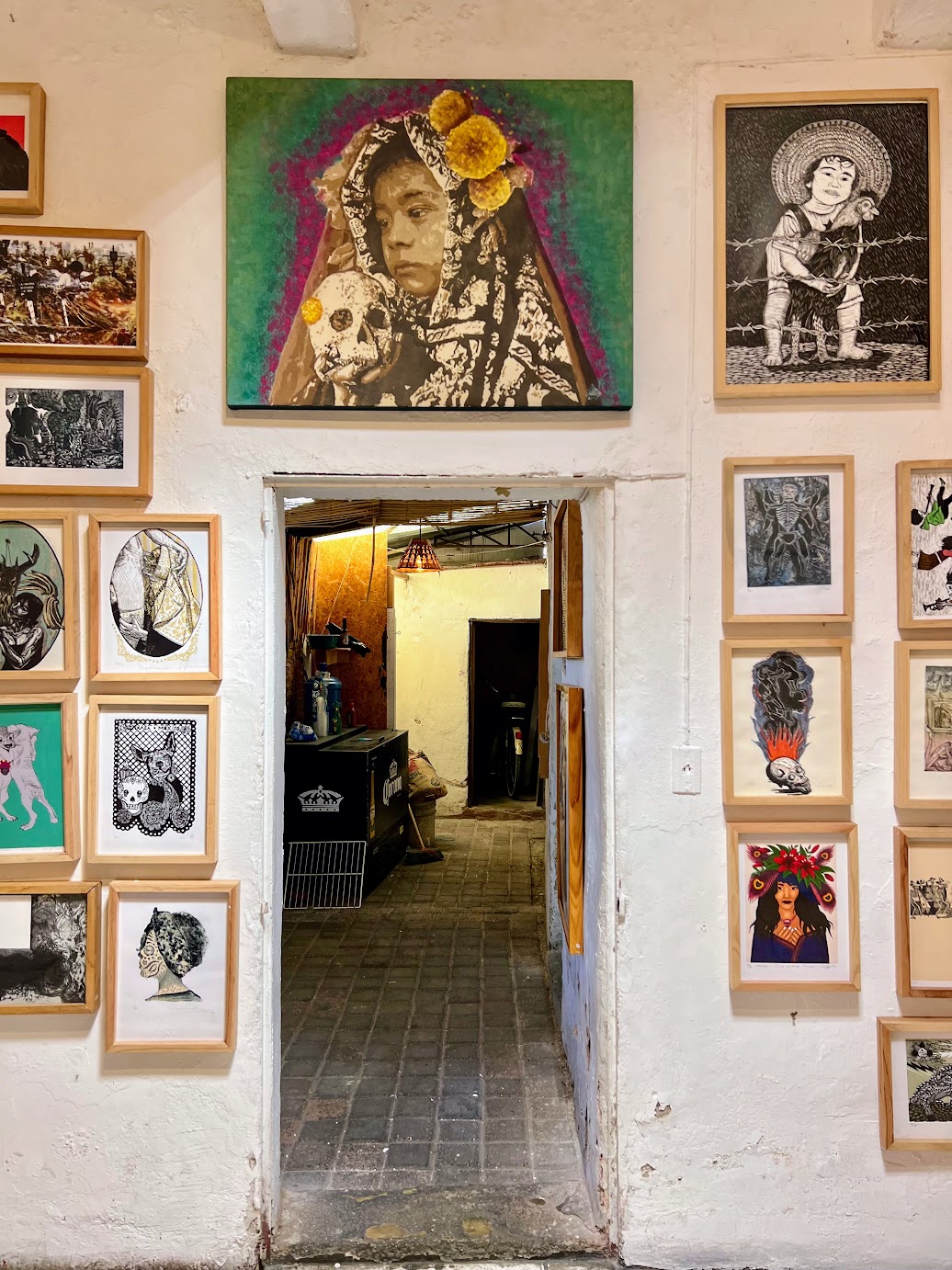
Espacio Zapata
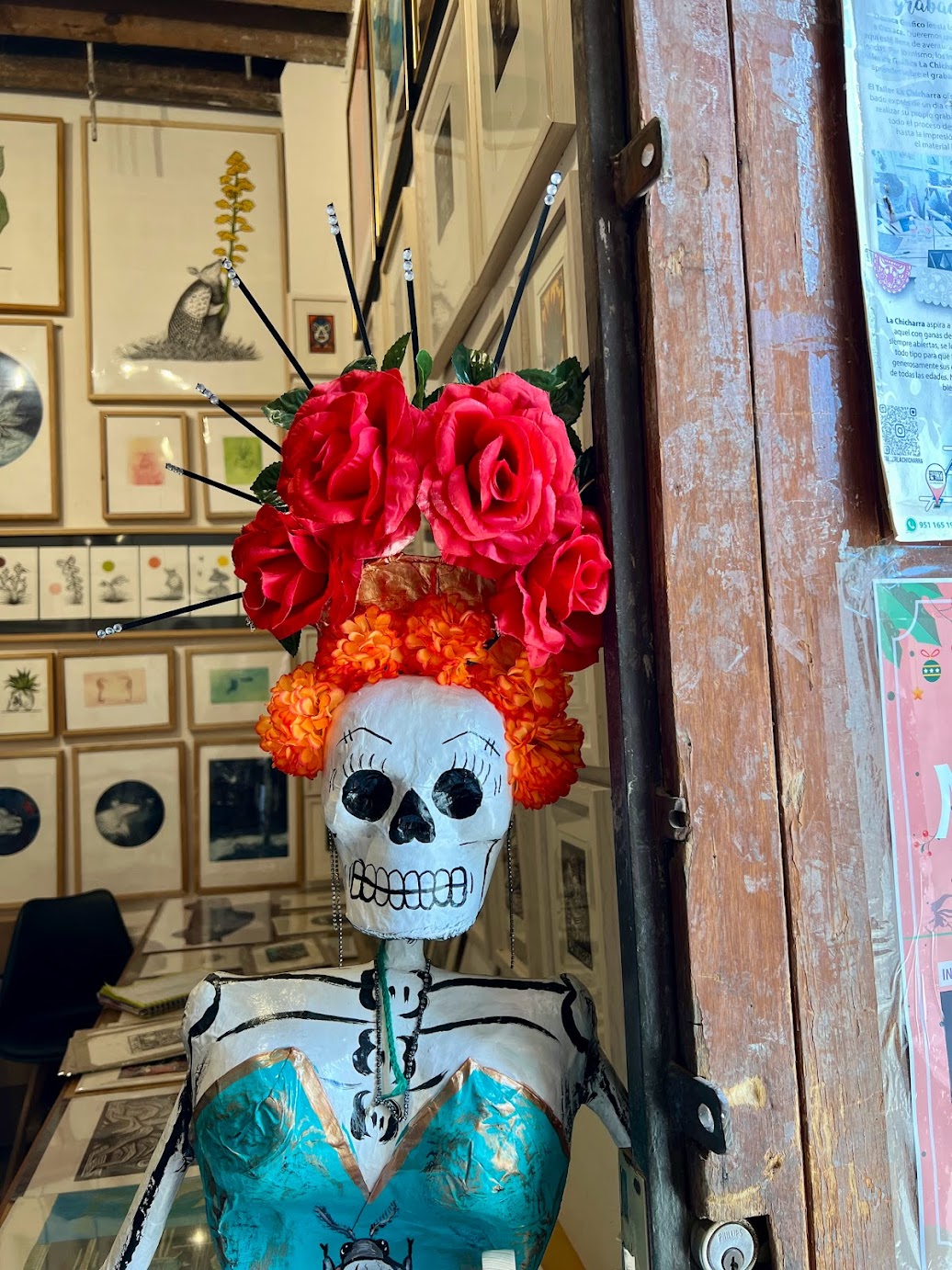
Espacio Zapata is run by the graphic art collective Assembly of Revolutionary Artists of Oaxaca (ASARO). The group formed in response to a 2006 teachers’ strike in Oaxaca that was met by the state with violence. Espacio Zapata has a gallery full of provocative revolutionary art for sale and is also a space for discussion, workshops, expositions, and events for artists and the community.
Subterráneos is a school, workshop, and gallery for young artists. You’ll see many of the collective’s prints around town, which seek to highlight and address social issues through graphic art.
Taller Artístico Comunitario (TAC) is a gallery and workshop highlighting and supporting young indigenous artists. Most of the members of TAC moved to Oaxaca City from indigenous communities to become artists. At TAC, they pay for paper but are otherwise provided free materials, space, and training to develop their craft. With its proceeds, TAC goes out to Oaxaca’s indigenous communities to provide free, week-long printmaking workshops for youth. TAC is a great place to shop and support Oaxaca’s indigenous artisans, as 100% of proceeds on prints go to the artist.
Galería Taller La Máquina is a more upscale gallery and workshop with a large 1909 lithography press from France that artisans use to make acrylic and woodcut prints. La Máquina features and sells graphic art from emerging and established artists and regularly hosts exhibitions.
Instituto de Artes Gráficas de Oaxaca was founded in 1988 by Francisco Toledo, an indigenous Zapotec painter who also designed Oaxaca’s botanical gardens. The institute has an extensive arts library that’s public and a community workspace. It also offers courses and hosts exhibitions.
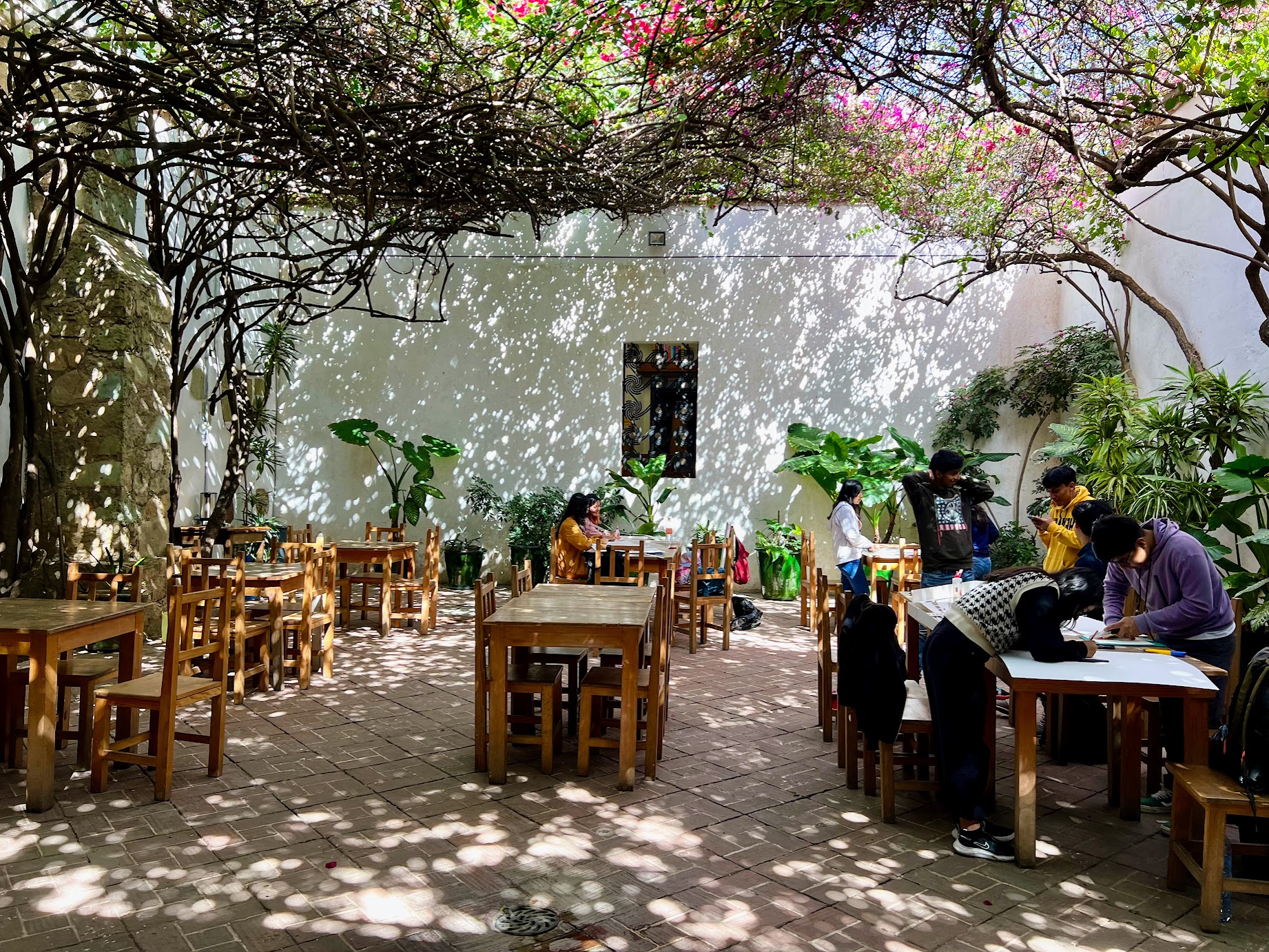
Markets
Many call Oaxaca the food capital of Mexico. The magic happens in the city’s markets, where acclaimed chefs and grandmothers alike come for fresh, local products. While food is the highlight for any visitor, the markets are the center for all kinds of trade. Everything from clothes to leather and silverware is sold there, making it the perfect place to soak up life in Oaxaca.
Mercado Sánchez Pascuas in the north is my favorite because it’s more of a local neighborhood market. Since it’s small with less traffic, you can enjoy it at your own pace. A few highlights are the juices from Angelitas Super Jugo and the tamales sold by the woman across from Angelitas. Note that tamales are eaten for breakfast, so they tend to sell out very early in the day at markets.
Mercado Benito Juárez, near the Zócalo, is Oaxaca City’s most centrally located market. It’s been a center for trade since 1894. There you’ll find Casilda Aguas Regionales selling aguas frescas and horchata since 1926 (see my post on drinks in Oaxaca for more information). For fans of icy, Mexican-style sorbet (nieve), the family behind Nieves Chagüita has been making it for 200 years.
Central de Abastos is a massive workaday market that’s a bit out of the way. This market is so big and full of hustle and bustle that I recommend only going to it on a tour or with a local guide.
Oaxacking, led by local Omar Alonso, offers a food tour through the market. He was recently featured on Eva Longoria’s foodie show “Searching for Mexico.” If you go on your own, try to find Netflix star Dona Vale and order her famous memelas. Note that her stall closes around noon.
If you have extra time, interest, or are in the neighborhood…
Mercado 20 de Noviembre, next to Mercado Benito Juárez, is known for its smokey, grilled meat passage or pasillo de carnes asados (photo below; Central de Abastos has a smaller version). Finally, Mercado de la Merced is worth a stroll or a bite to eat if you’re in the Barrio de Jalatlaco.
For serious foodies short on time…
If you want to pack in a whole lot, I recommend doing this tour that takes you to three markets (Sánchez Pascuas, Benito Juárez, and 20 de Noviembre) and street food stalls. You’ll get in 24+ bites! The tour is led by a local who’s been featured on Netflix’s Somebody Feed Phil and accommodates vegetarians with advance notice (despite what the description says on Viator).

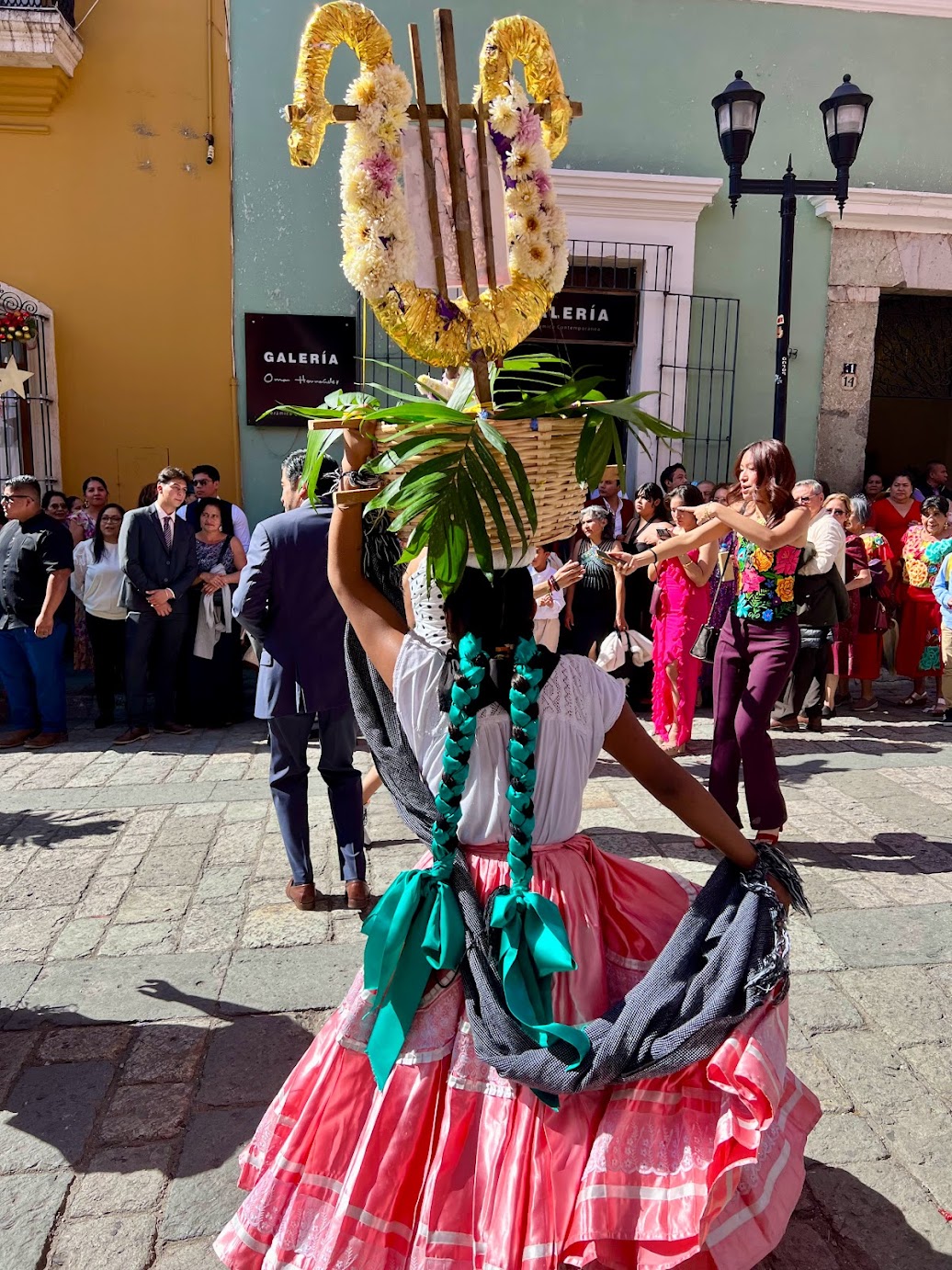
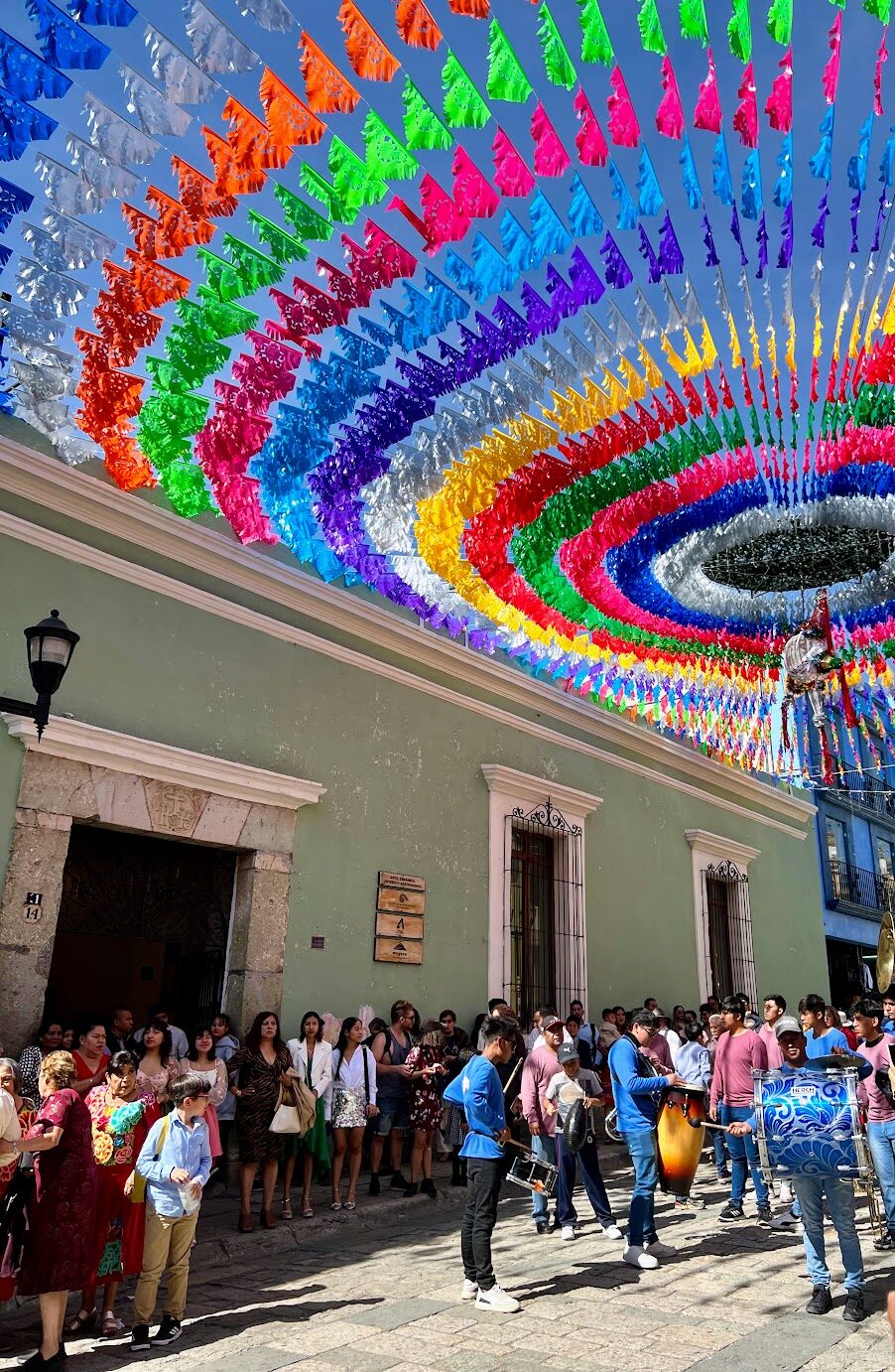
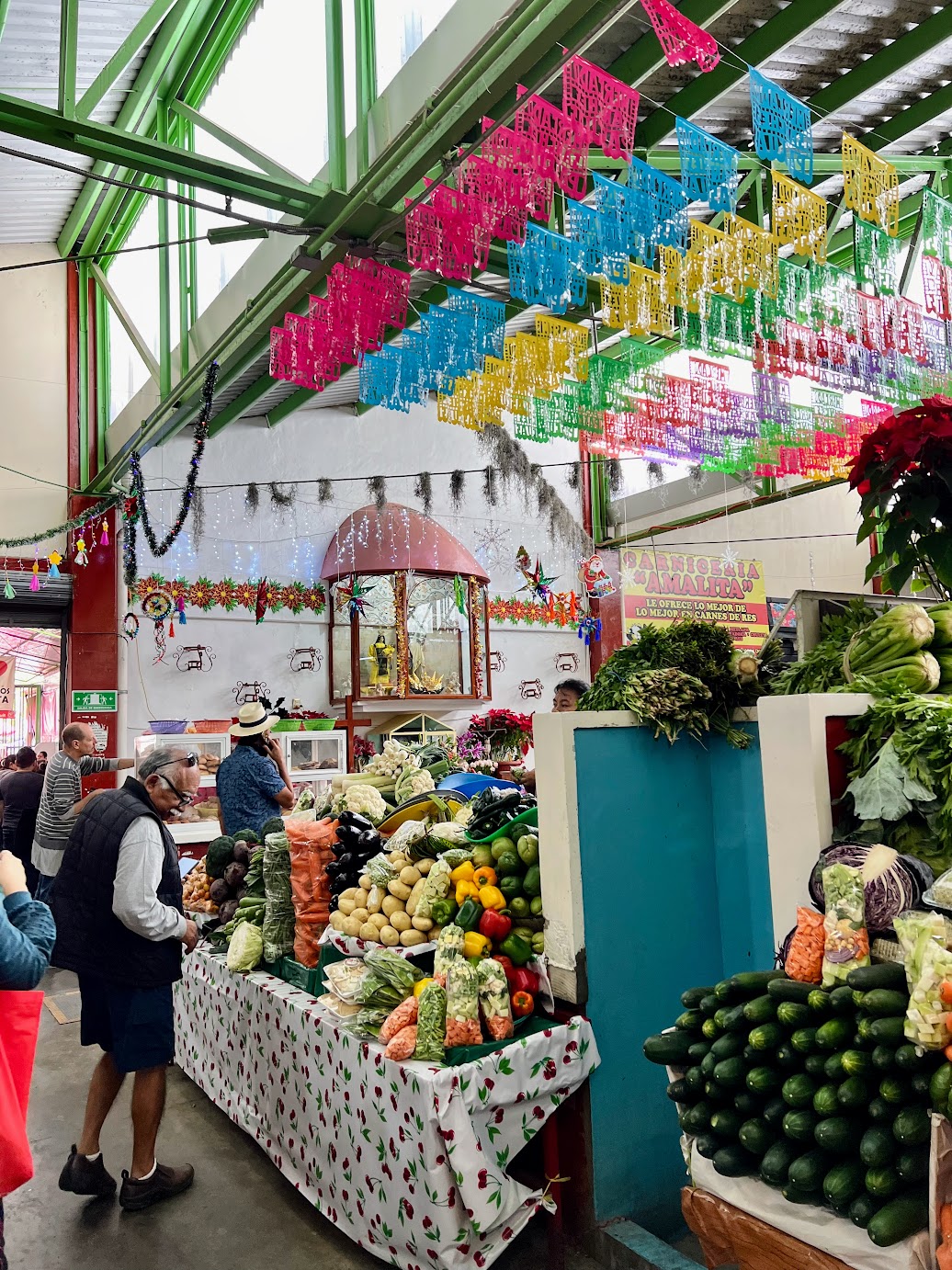
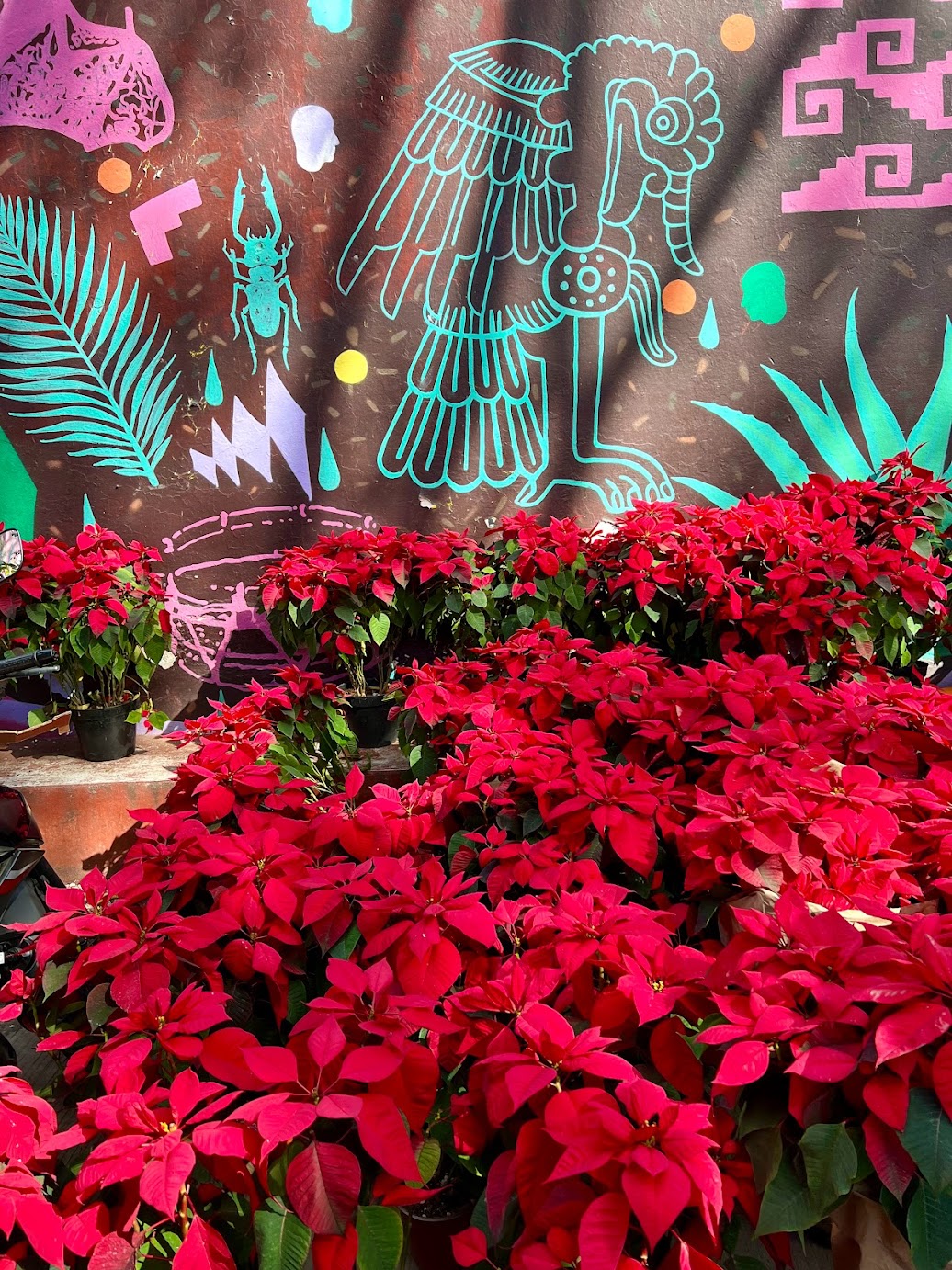
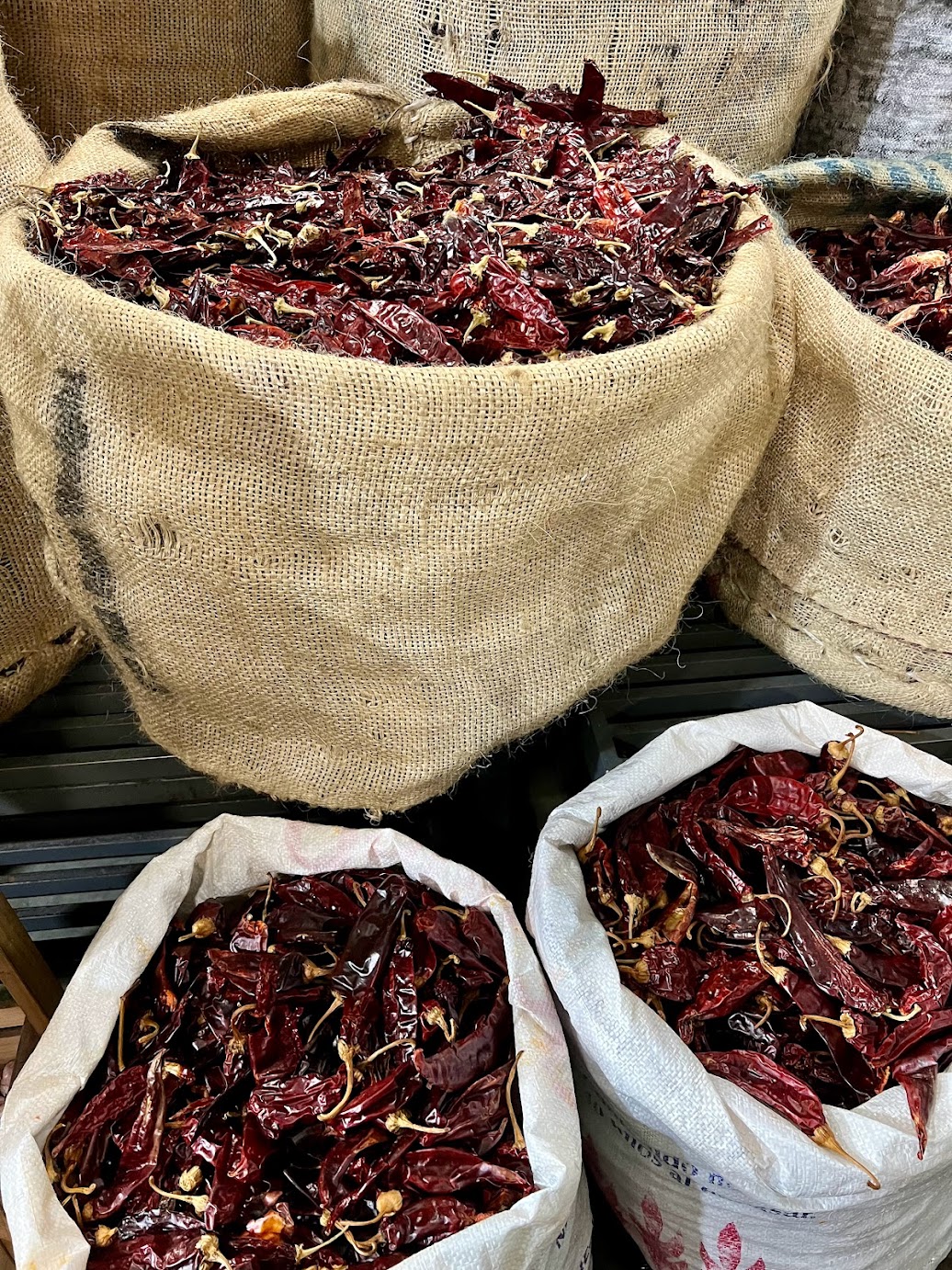

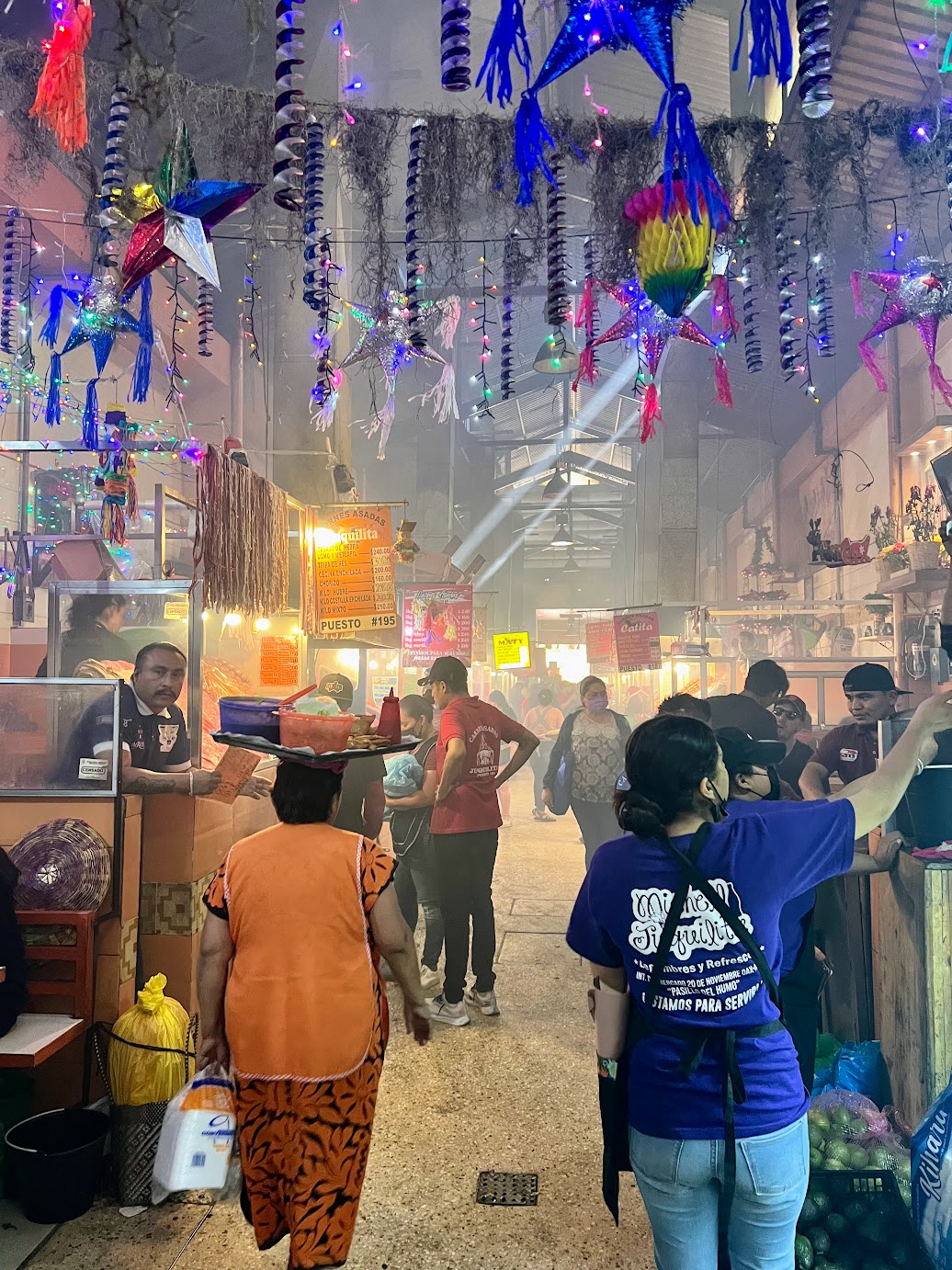

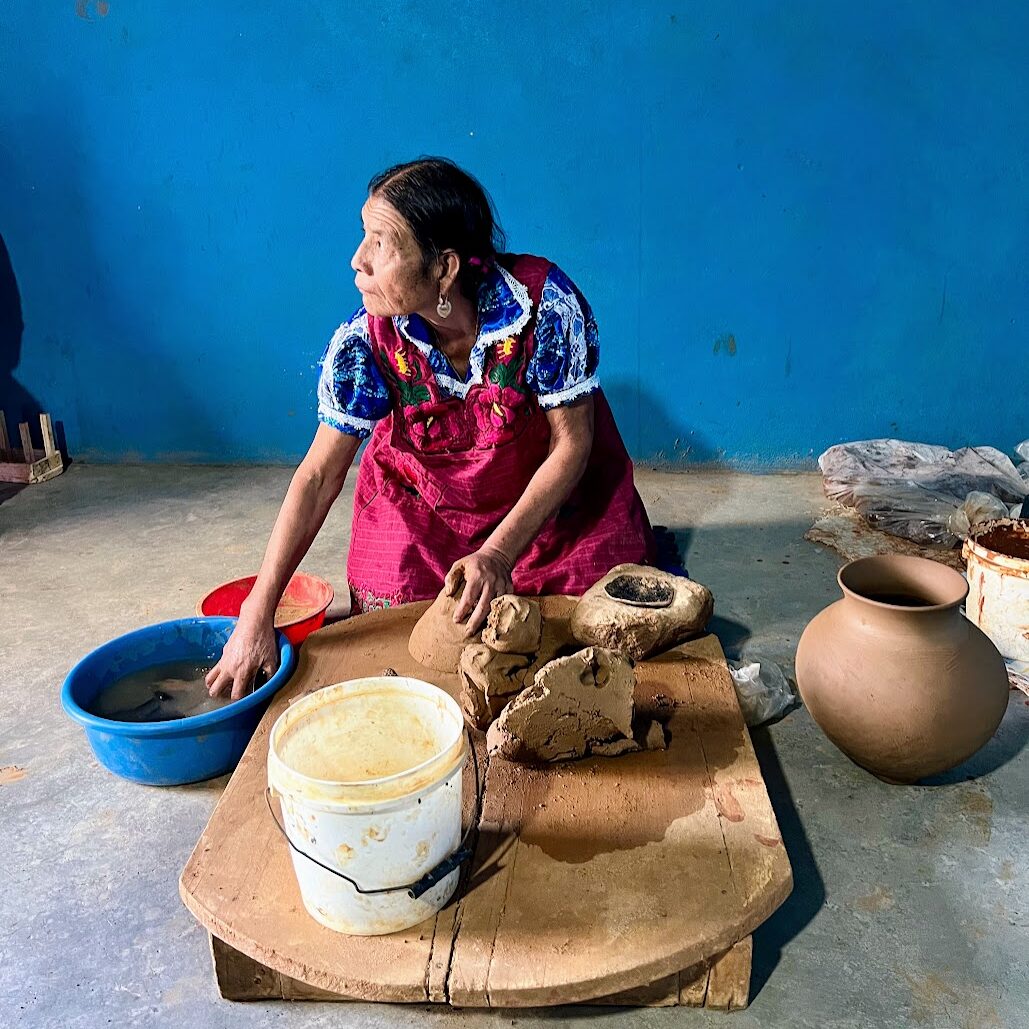
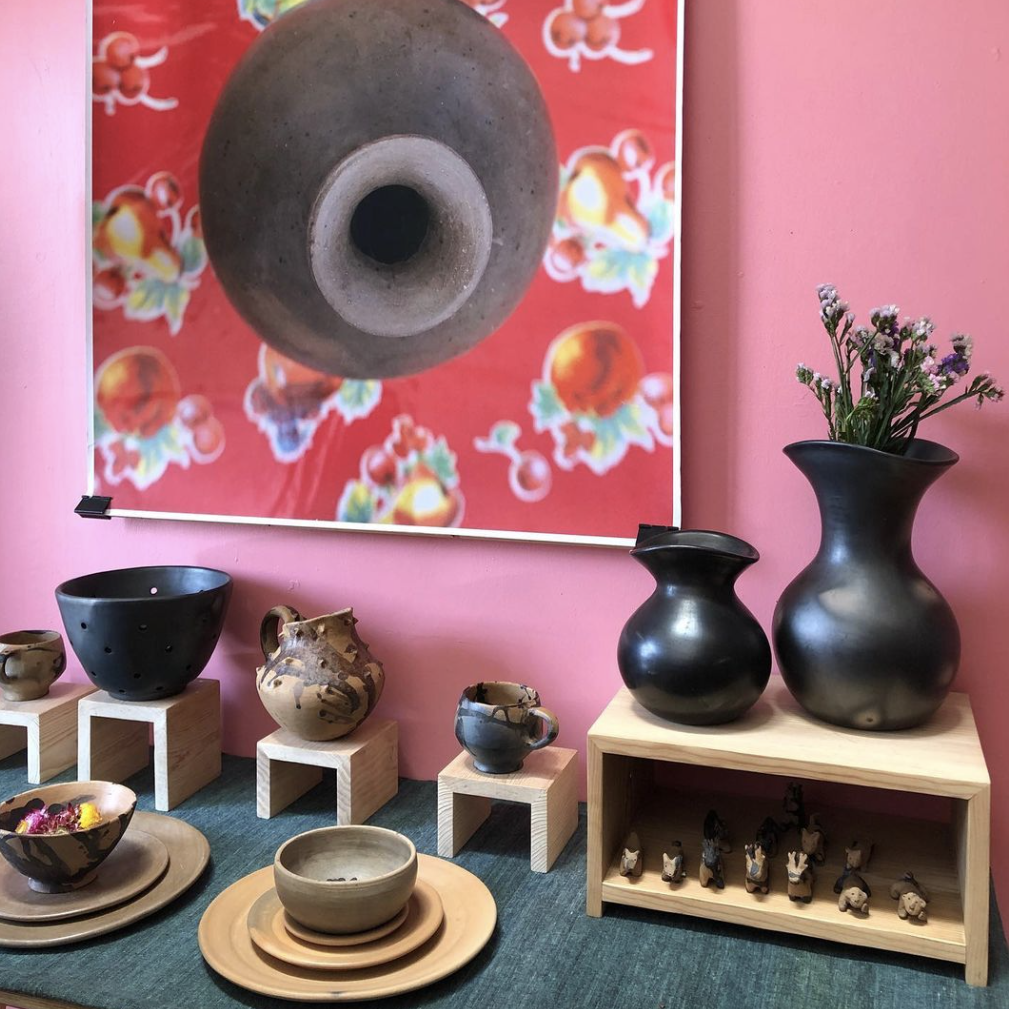
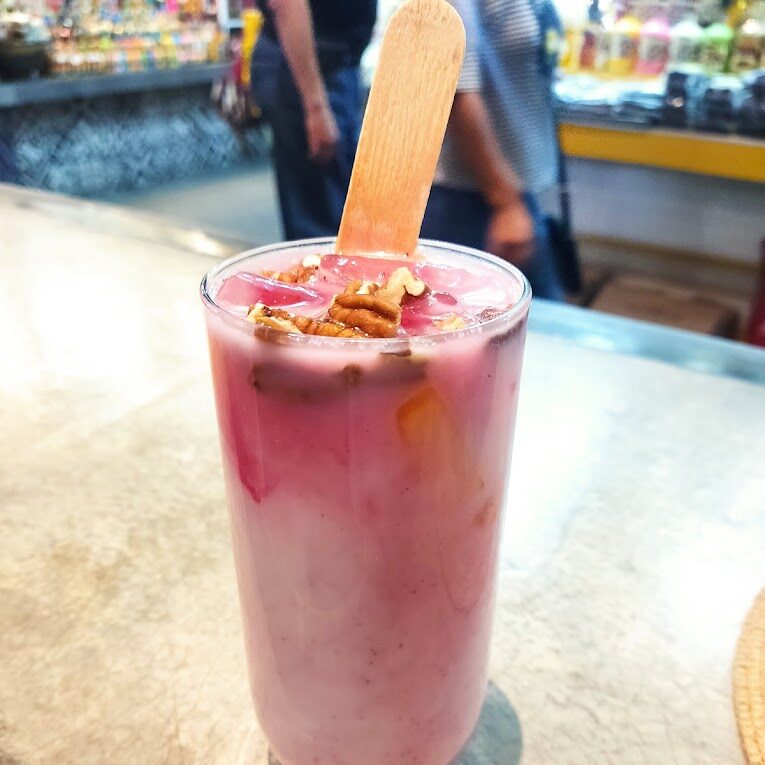
Leave A Comment